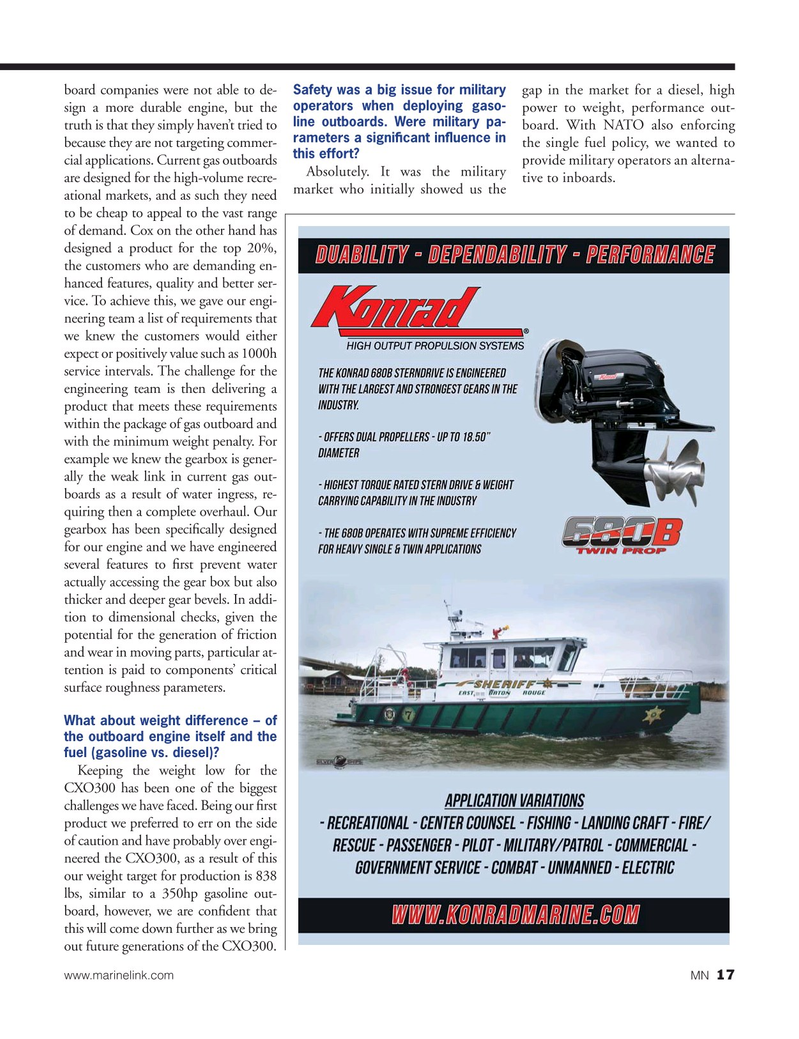
Page 17: of Marine News Magazine (June 2019)
Combat & Patrol Craft Annual
Read this page in Pdf, Flash or Html5 edition of June 2019 Marine News Magazine
board companies were not able to de- gap in the market for a diesel, high
Safety was a big issue for military operators when deploying gaso- sign a more durable engine, but the power to weight, performance out- line outboards. Were military pa- truth is that they simply haven’t tried to board. With NATO also enforcing rameters a signi? cant in? uence in because they are not targeting commer- the single fuel policy, we wanted to this effort?
cial applications. Current gas outboards Absolutely. It was the military provide military operators an alterna- are designed for the high-volume recre- tive to inboards.
ational markets, and as such they need market who initially showed us the to be cheap to appeal to the vast range of demand. Cox on the other hand has designed a product for the top 20%, the customers who are demanding en- hanced features, quality and better ser- vice. To achieve this, we gave our engi- neering team a list of requirements that we knew the customers would either expect or positively value such as 1000h service intervals. The challenge for the engineering team is then delivering a product that meets these requirements within the package of gas outboard and with the minimum weight penalty. For example we knew the gearbox is gener- ally the weak link in current gas out- boards as a result of water ingress, re- quiring then a complete overhaul. Our gearbox has been speci? cally designed for our engine and we have engineered several features to ? rst prevent water actually accessing the gear box but also thicker and deeper gear bevels. In addi- tion to dimensional checks, given the potential for the generation of friction and wear in moving parts, particular at- tention is paid to components’ critical surface roughness parameters.
What about weight difference – of the outboard engine itself and the fuel (gasoline vs. diesel)?
Keeping the weight low for the
CXO300 has been one of the biggest challenges we have faced. Being our ? rst product we preferred to err on the side of caution and have probably over engi- neered the CXO300, as a result of this our weight target for production is 838 lbs, similar to a 350hp gasoline out- board, however, we are con? dent that this will come down further as we bring out future generations of the CXO300.
www.marinelink.com MN 17

 16
16

 18
18
